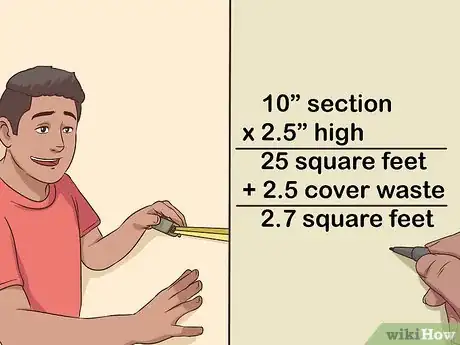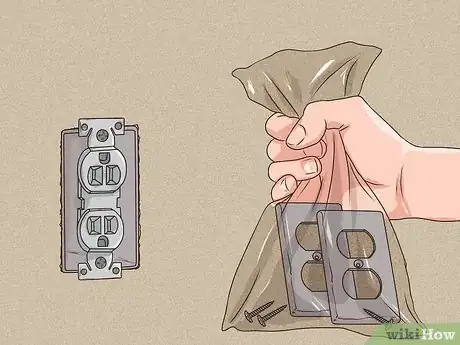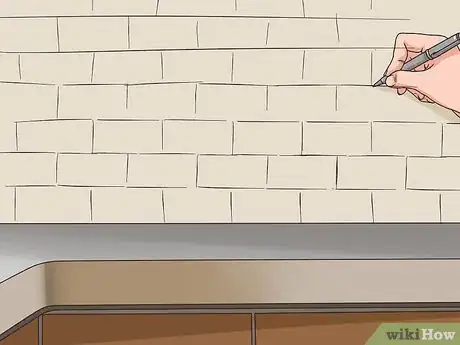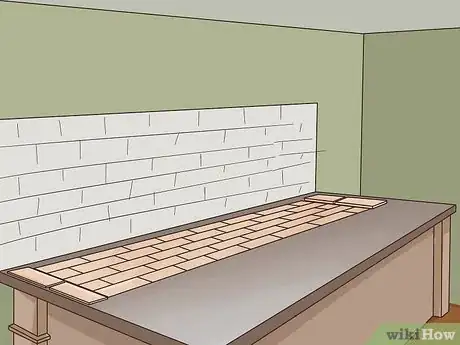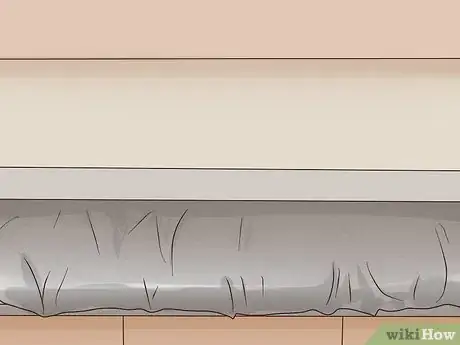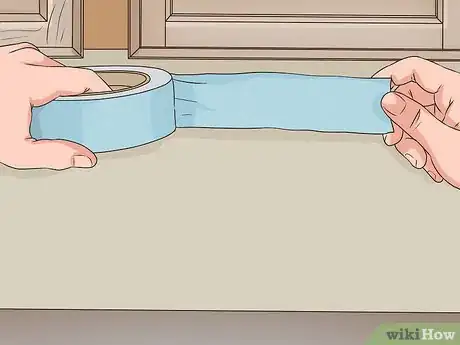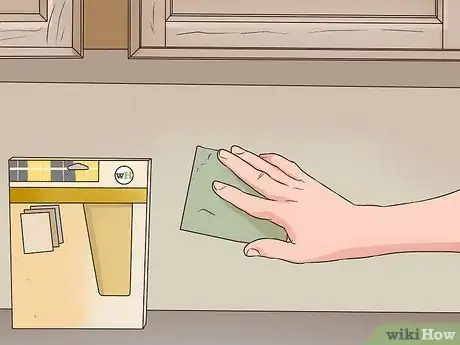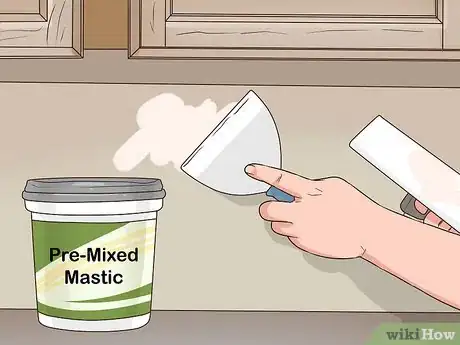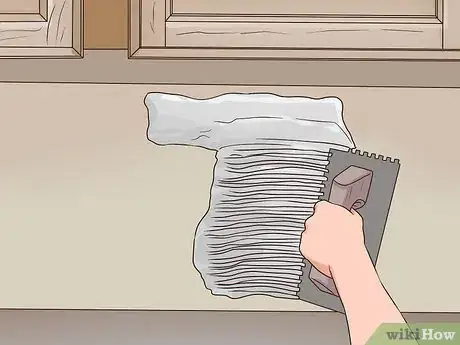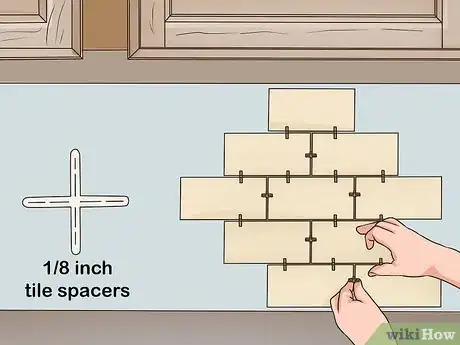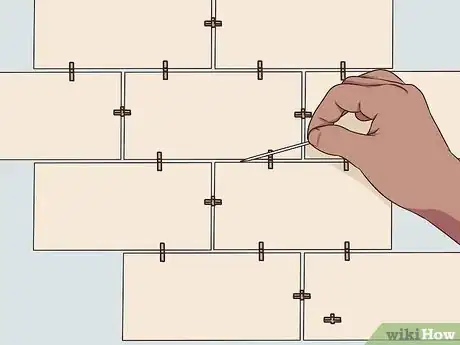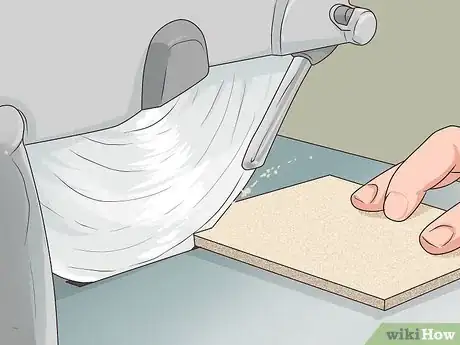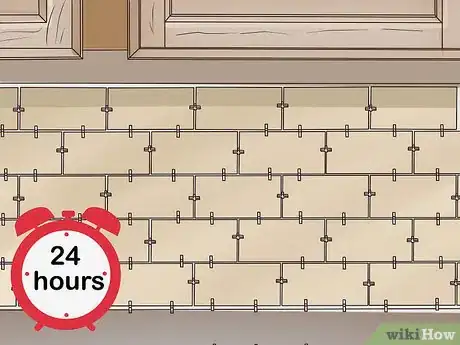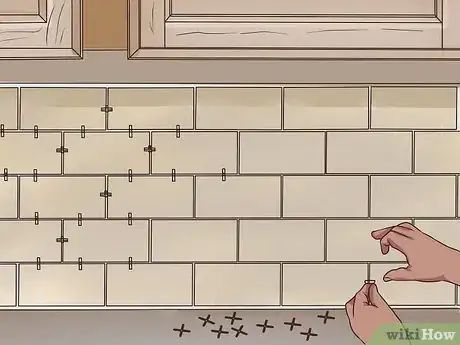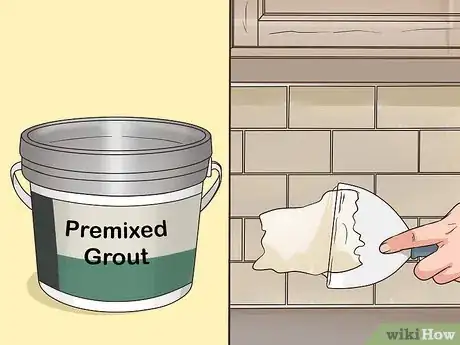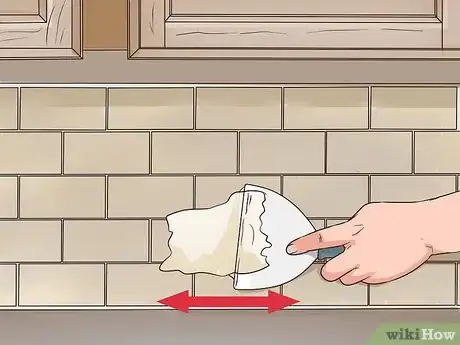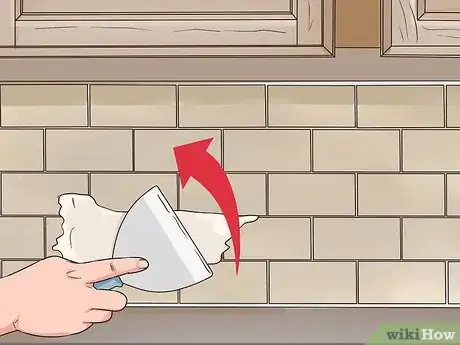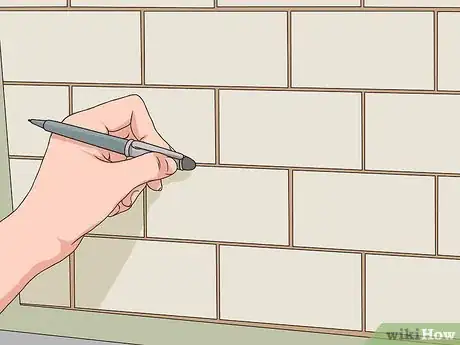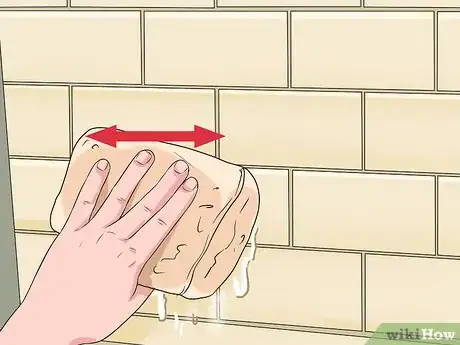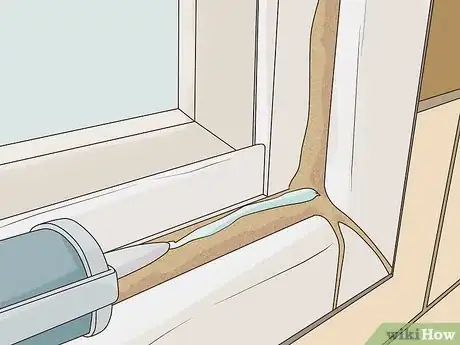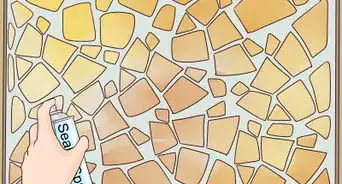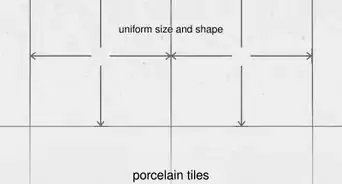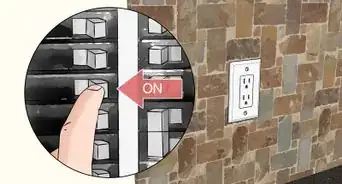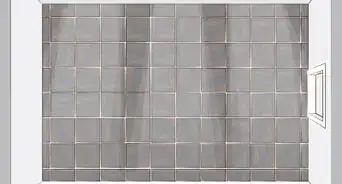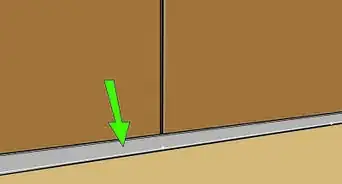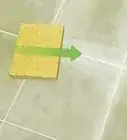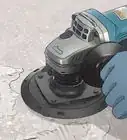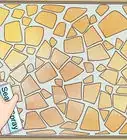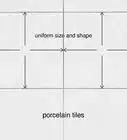This article was co-authored by Art Fricke. Art Fricke is a home renovation and repair specialist and the owner of Art Tile & Renovation based in Austin, Texas. With over 10 years of experience, he specializes in bathroom and kitchen renovations. Art focuses on a single contractor approach to customized renovation work, and performs projects such as installing custom tile showers, fixing tiled shower leaks, replacing cracked tiles, and installing floor and wall tile.
This article has been viewed 39,938 times.
Subway tile is an increasingly popular backsplash choice for kitchens, bathrooms, and utility rooms. One of the best things about subway tile is that it is relatively inexpensive and easy to install. Throughout a weekend or two, you can make a chic and practical backsplash out of the subway tiles of your choosing.
Steps
Determining Your Layout
-
1Measure the area and purchase 10% more tile than you need. Use a tape measure and measure the width and length of the space you want to cover with subway tiles. Multiply these numbers by each other. This will give you the total area you want to tile. Afterwards, add 10% to the total to cover potential waste.[1]
- If you have a 10-foot (3 m) section that is 2.5 (.76 m) high, you have an area of 25 square feet (7.6 square meters) to cover. To cover waste, you’ll add 2.5 square feet (.76 square meters) in addition. This will give you a total of 27.5 square feet (8.4 square meters) of subway tile you will need to purchase.
-
2Remove outlet and light switch covers. Use a flathead screwdriver and unscrew the plastic covers from the outlets and light switches. After removing them, place the screws and the covers in plastic bags so you don’t lose any pieces. You’ll replace the covers once you’ve installed your backsplash.[2]Advertisement
-
3Sketch your tile design on the wall. Start by determining how many tiles can fit vertically and horizontally in the area you want to cover. Next, figure out where you need to place partial pieces of tile (pieces that you will cut). A lot of this depends on your taste. Finally, take a pencil and draw on the wall where you plan to place individual tiles.
- Factor in 1/8th of an inch (.32 cm) between tiles and the wall for grout lines.
- You may want to choose between centering whole pieces of tile or starting at the top with whole pieces and finishing the bottom with cut/partial pieces (if there isn’t enough space for whole pieces).
-
4Lay your tile out. After you’ve sketched your design on the wall, you should assemble all of the pieces you need to complete your project. It is best to lay out your pieces on a large table or on the floor in another room. This way, you’ll be able to match the pieces to the places on the wall where they will go.[3]
- Don’t cut any partial pieces yet. Set aside all of the pieces you’ll need to cut partial pieces. After placing full pieces on your wall, you may find that the size of the partial pieces you’ll need is a little different than what you anticipated.
-
5Place a cloth or plastic cover over your countertops and appliances. Use a cloth or plastic to cover anything you want to protect from adhesive, grout, and caulk. Most importantly, place cloth or plastic over your countertops, on appliances, and on any furniture in the immediate area.[4]
- Secure drop clothes to countertops and appliances with painter’s tape.
-
6Cover the edges of cabinets and appliances with painter’s tape. Take the time to systematically cover the edges of cabinets, appliances, and woodwork. This way, you’ll protect cabinets and more from being stained with grout or caulk.[5]
-
7
Laying Your Tile
-
1Use a trowel to apply pre-mixed mastic to the wall. Mastic is the adhesive, much like mortar, you’ll use to secure the tile to your wall.[8] Spread enough pre-mixed mastic on the wall so you can place 1 row of tile for about 4 linear feet (1.2 m). This way, you’ll be able to place your tiles before the mastic starts to dry.[9]
-
2Switch to a v-notched trowel to remove excess mastic from the wall. Hold the trowel at a 45-degree angle. Gently sweep vertically over the mastic. This will remove excess mastic and will also create grooves that will help the tile adhere to the wall.[10]
-
3Separate your tiles with 1/8 inch (.32 cm) tile spacers. Place one tile (or one sheet of tiles) on the wall at a time. Once you’re done with the 4 foot (1.2 m) row segment, apply more mastic and place more tile on the wall. Continue this process until you’ve covered the majority of your drywall with complete tiles.[11]
-
4Use a toothpick or another tool to remove excess mastic from between the tiles. Slide your tool of choice into the space between tiles and push out any mastic that was forced up when you placed the tile. By removing excess mastic, you’ll make sure there is plenty of room for grout when you apply it.[12]
-
5Cut partial tiles. In spaces where a whole tile won’t fit, you’ll have to cut smaller pieces of whole tile. Use a wet saw to cut your tiles. If you don’t have a wet saw, you can purchase a ceramic tile cutter.[13]
- Before cutting a tile, use a pencil to outline where you need to cut it.
Grouting and Caulking
-
1
-
2Remove spacers from between your subway tiles. Move over your tiles from the left to the right and remove all of the spacers you placed to separate the tiles from one another. If you don’t remove the spacers before applying grout, you’ll have problems with your grout in the future.
- If the spacer won't come out, use a flathead screwdriver to pry it out. Be careful not to damage the tile.
-
3Open your premixed grout 15 minutes before you use it. While you can mix your own grout, it is much easier to purchase premixed grout and apply it without preparation. However, make sure you don’t open the grout until you’re ready to use it. If you open it earlier, it may begin to dry before you use it.[16]
-
4Spread grout with a float back and forth. Scoop up a generous amount of grout from your bucket with your float. Spread the grout over the spaces between your tiles. Apply extra grout, as you want to make sure you’re completely filling all grout lines.[17]
- Avoid filling the space between your tiles and your counter, appliances, or windows. You’ll fill these in with caulk later.
-
5
-
6Shape your grout with a pen, pencil, or the rounded edge of a float. Take a rounded tool and run it along your grout lines. This will give a slightly concave appearance to your grout lines. It will also help to compact the grout and fill any pockets that aren’t already filled.
-
7Use a sponge to remove any grout haze. Dampen a sponge in cool clean water. Wipe your tiles in a back-and-forth fashion. Rinse your sponge after you’ve wiped down one 4 foot (1.2 m) row of tiles. Continue to wipe your tiles until you’ve removed any grout or grout haze that remains on them.[20]
-
8Caulk the edges between your tiles and cabinets, windows, and appliances. Use a caulk that closely matches the color of the grout you used. Squeeze your caulk gun or the tube slightly to push out just enough caulk to fill the gap. Finally, dampen one of your fingers in warm water and use it to smooth the caulk.[21]
- You can use a rounded end of a pen, pencil, or another object instead of your finger.
- Place painter's tape on the face of the tiles adjacent to where you’ll caulk. Remove the tape shortly after you’ve applied the caulk.
Things You’ll Need
- Subway tile
- 80-grit sandpaper
- A Philips and flathead screwdriver
- A float
- Tile spacers
- Pre-mixed mastic
- Pre-mixed grout
- Interior caulk
References
- ↑ https://www.younghouselove.com/2017/05/install-subway-tile-backsplash/
- ↑ https://www.younghouselove.com/2017/05/install-subway-tile-backsplash/
- ↑ https://www.younghouselove.com/2017/05/install-subway-tile-backsplash/
- ↑ http://www.homedit.com/how-to-lay-subway-tile/
- ↑ https://www.younghouselove.com/2017/05/install-subway-tile-backsplash/
- ↑ Art Fricke. Home Renovation & Repair Specialist. Expert Interview. 1 July 2020.
- ↑ https://www.younghouselove.com/2017/05/install-subway-tile-backsplash/
- ↑ Art Fricke. Home Renovation & Repair Specialist. Expert Interview. 1 July 2020.
- ↑ https://www.younghouselove.com/2017/05/install-subway-tile-backsplash/
- ↑ https://www.younghouselove.com/2017/05/install-subway-tile-backsplash/
- ↑ http://www.homedit.com/how-to-lay-subway-tile/
- ↑ http://www.homedit.com/how-to-lay-subway-tile/
- ↑ https://www.younghouselove.com/2017/05/install-subway-tile-backsplash/
- ↑ Art Fricke. Home Renovation & Repair Specialist. Expert Interview. 1 July 2020.
- ↑ https://www.todayshomeowner.com/video/how-to-install-a-subway-tile-backsplash/
- ↑ https://www.younghouselove.com/2017/05/install-subway-tile-backsplash/
- ↑ https://www.younghouselove.com/2017/05/install-subway-tile-backsplash/
- ↑ Art Fricke. Home Renovation & Repair Specialist. Expert Interview. 1 July 2020.
- ↑ https://www.todayshomeowner.com/video/how-to-install-a-subway-tile-backsplash/
- ↑ https://www.todayshomeowner.com/video/how-to-install-a-subway-tile-backsplash/
- ↑ https://www.younghouselove.com/2017/05/install-subway-tile-backsplash/
About This Article
To install subway tile backsplash, measure the wall, calculate the number of tiles needed to cover it, and buy 10% more tile than you need to account for waste. Next, sketch your design on the wall and lay out the the tiles on a large table. Then, sand the wall and apply mastic to it with a trowel. Finally, press the tiles into place, separating them with 1/8 inch spacers, and let them set overnight before grouting and caulking. For tips on grouting and caulking, read on!
